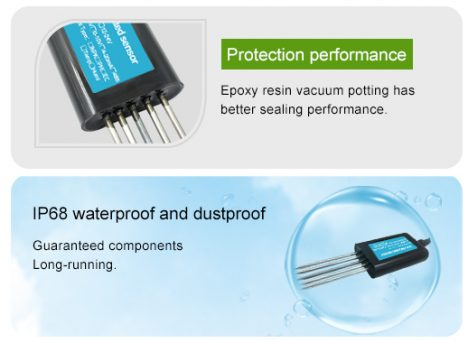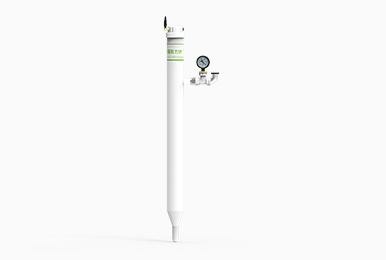In the era of smart agriculture, the integration of advanced technologies has transforme traditional farming practices, enabling more efficient resource management and improved crop yields. One of the key innovations driving this transformation is the development of advanced wireless soil sensors. These cutting-edge devices provide real-time data on soil conditions, moisture levels, nutrient content, and temperature, allowing farmers to make informed decisions and optimize agricultural operations. In this article, we will explore the capabilities, benefits, and applications of advanced wireless soil sensors in modern agriculture.
Capabilities of Advanced Wireless Soil Sensors

- Real-Time Monitoring: Advanced wireless soil sensors enable real-time monitoring of soil parameters, providing farmers with up-to-date information on soil conditions and plant health. By continuously collecting data on moisture levels, nutrient content, and temperature, these sensors offer valuable insights for precision agriculture practices.
- Remote Accessibility: Wireless soil sensors can be accessed remotely through mobile applications or online platforms, allowing farmers to monitor soil conditions from anywhere at any time. This remote accessibility enhances convenience and efficiency in managing agricultural operations, enabling timely interventions and adjustments as needed.
- Multi-Parameter Measurement: Advanced soil sensors are capable of measuring multiple parameters simultaneously, including soil moisture, pH levels, salinity, temperature, and nutrient content. By capturing a comprehensive set of data, farmers can gain a holistic understanding of soil health and tailor their farming practices accordingly.
- Data Analytics: Wireless soil sensors incorporate data analytics capabilities to analyze and interpret the collected data, providing actionable insights for decision-making. By leveraging advanced algorithms and predictive modeling, farmers can optimize irrigation schedules, fertilizer applications, and crop management strategies for improved productivity.
- Scalability: Advanced wireless soil sensors are designed to be scalable, allowing farmers to deploy multiple sensors across large agricultural fields for comprehensive monitoring. The scalability of these sensors enables precise mapping of soil variability and optimization of resource allocation based on specific field conditions.
Benefits of Advanced Wireless Soil Sensors
- Precision Agriculture: Wireless soil sensors enable precision agriculture practices by providing accurate and localized data on soil conditions. By tailoring irrigation, fertilization, and pest management strategies to specific areas within a field, farmers can optimize resource use and maximize crop yields.
- Water Conservation: Advanced soil sensors help farmers optimize irrigation practices by monitoring soil moisture levels and plant water requirements. By avoiding overwatering and ensuring efficient water use, farmers can conserve water resources, reduce costs, and minimize environmental impact.
- Enhanced Crop Quality: By monitoring soil nutrient levels and pH balance, wireless soil sensors enable farmers to maintain optimal growing conditions for crops. This leads to improved crop quality, increased nutrient uptake, and enhanced resistance to diseases and pests.
- Cost Savings: Advanced wireless soil sensors help farmers reduce input costs by optimizing the use of water, fertilizers, and other resources. By avoiding unnecessary applications and targeting inputs based on actual soil conditions, farmers can achieve cost savings and maximize profitability.
- Environmental Sustainability: By promoting efficient resource management and reducing environmental impact, wireless soil sensors contribute to sustainable agricultural practices. By minimizing chemical runoff, conserving water, and enhancing soil health, farmers can protect natural ecosystems and promote long-term sustainability.
Applications of Advanced Wireless Soil Sensors
Precision Irrigation: Wireless soil sensors are used for precision irrigation management, enabling farmers to adjust irrigation schedules based on real-time soil moisture data. By delivering the right amount of water to plants at the right time, farmers can optimize water use efficiency and crop productivity.
Nutrient Management: Advanced soil sensors help farmers monitor soil nutrient levels and optimize fertilizer applications to meet crop requirements. By ensuring balanced nutrient supply, farmers can enhance crop growth, yield, and quality while minimizing nutrient losses to the environment.
Climate Monitoring: Wireless soil sensors are utilized for climate monitoring and weather forecasting in agricultural settings. By measuring soil temperature, humidity, and other parameters, farmers can anticipate weather patterns, plan planting schedules, and mitigate risks associated with extreme weather events.
Disease Prevention: Advanced soil sensors play a role in disease prevention by monitoring soil conditions that can contribute to plant diseases. By detecting early signs of stress or imbalance in soil health, farmers can implement preventive measures to protect crops from diseases and pests.
Conclusion
Advanced wireless soil sensors are revolutionizing agriculture by providing real-time data, precision monitoring, and actionable insights for farmers. With their capabilities in remote accessibility, multi-parameter measurement, data analytics, scalability, and more, these sensors empower farmers to make informed decisions, optimize resource management, and enhance crop productivity. By embracing advanced sensor technology, farmers can drive sustainable practices, improve efficiency, and ensure food security for a growing global population. The integration of wireless soil sensors represents a significant advancement in modern agriculture, paving the way for a more connected, data-driven, and sustainable farming future.
